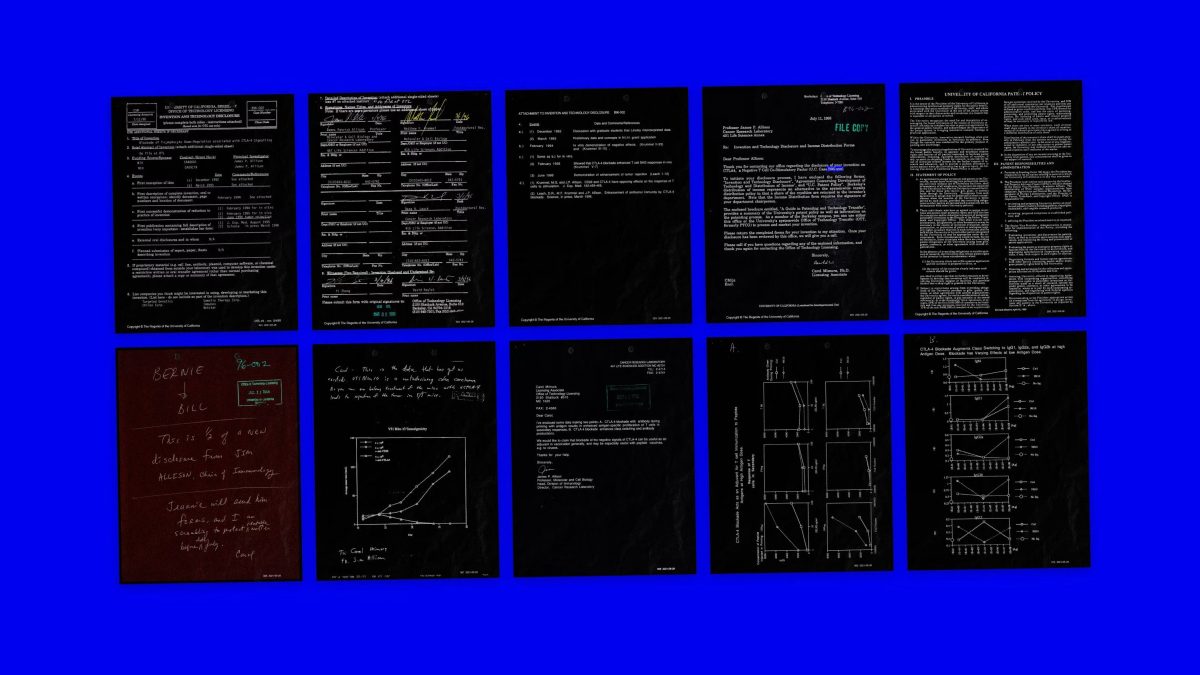Have There Really Been Major NFT Advancements in the Last Year?
In 2021, the nonfungible token (NFT) ecosystem absolutely exploded. Artists gained a robust new way to sustain themselves, NFT collectors evolved into prominent Web3 builders, and entire lives were changed thanks to blockchain technology.
That’s all well and good, but does it really matter in the grand scheme of things?
Of course, those associated with the world of art, finance, and blockchain tech will say that it does. To the vast majority of consumers though, NFTs are inconsequential. Sure, the total sales volume of NFTs went from $94.9 million to over $23 billion in a year, but big figures and media coverage of landmark sales only helps reinforce the narrative that nonfungible tokens solely exist for financial gain.
NFT skepticism feels just as high as it did a year ago. Sure, these blockchain tokens may be going mainstream, but are they actually having any major impact on society? Do they really have the potential to change the world?
Well, when you dig a bit deeper into the weird wide world of NFTs: yes, the potential is actually there. While the majority of conversations surrounding NFTs still seem focussed on scams, conspiracies, monkey pictures, and whether or not NFTs have any actual utility, there are many developers, artists, and companies aiming to make a real impact using blockchain technology. Here’s how.
Advancements in NFT tech
When it comes to blockchain tech, it can be easy to make an argument for stagnancy. Especially in the case of the Ethereum blockchain, a lot is left to be desired when it comes to democratization, energy usage, network constrictions, and more. Yet, the future may actually be just over the horizon.
What’s next for the blockchain
The Ethereum Merge might be one of the most important blockchain events to happen in recent history — although it hasn’t actually happened…yet. A marker for a major shift in the way the blockchain works, the Merge will see Ethereum transition from the infamous proof-of-work (PoW) consensus mechanism to a proof-of-stake (PoS) model with the intent of making the blockchain both faster and more energy-efficient.
Although the Merge was billed to happen sometime last year, it continues to be pushed back, with the new date range posted for sometime in August 2022. Set to reduce Ethereum’s energy consumption by around 99.95 percent, the Merge comes after EIP-1559 was introduced in November 2021, setting the stage for Ethereum to become deflationary.
While the Merge is an advancement that has yet to occur, it comes concurrently with the growth of the Polygon, Tezos, and Solana blockchains. In early 2021, Ethereum, FLOW, and WAX were seemingly the sole proprietors of the NFT ecosystem. Now, over a year later, the expansion of the NFT market is palpable, ranging across a variety of blockchains.
What’s next for NFTs
As the NFT ecosystem itself has expanded, so too has the range of intellectual property (IP) minted on the blockchain. Hailed as one of the best economic innovations in recent history, NFTs have enabled a range of content creators and owners to monetize their IP in a way never thought possible.
It’s no longer just digital artists and NFT traders profiting off of non-fungibility, it’s comedians, writers, skateboarders, and more. Even further than IP though, the tokens themselves that house the myriad of creator content are evolving as well.
With Soulbound Tokens (SBTs), Ethereum co-founder Vitalik Buterin ushered in a new era of crypto assets aimed at housing not only the interests and affiliations of a person as it pertains to them as a collector, but a full-fledged individual as well. As dystopian as that might sound, Buterin hopes that SBTs — which we can think of as a sort of NFT 2.0 — will be made to be permanent, non-tradeable, and individual-specific blockchain assets.
Yes, SBTs do have the potential to change life as we know it. And they could be available by the end of 2022 according to Glen Weyl who co-wrote the research paper that introduced SBTs. Yet, SBTs don’t really fit in with our current conception of society.
When Vitalik Buterin and his co-authors came up with the concept of SBTs, they were thinking in terms of a decentralized society, a concept that probably won’t have real-world application for years to come. So while SBTs might be a bit too futuristic, their concept seems to have shifted the conversation about NFTs toward what the technology might look like long-term.
Of course, beyond technological advancements, the unique ways in which developers and organizations are using the blockchain and nonfungibility can provide us with a more tangible overview of how NFTs have advanced over the last year. There have been financial gains, yes, but it seems the most innovation is happening in spaces where token prices have little to do with the creation process.
NFTs in science and technology
While the major headlines surrounding NFTs usually relate to celebrities, auctions, and controversy, endeavors within blockchain sectors beyond the scope of the public eye have emerged as some of the most interesting use cases for NFTs. Most notably, the ways in which NFTs are being used throughout science and technology have illuminated potential future applications.
NFTs allow users to not only own but send and receive information on the blockchain. JPEGs are but a facade of the coding that makes each NFT a unique and immutable asset living on the blockchain. And the possibilities of what can be housed within an NFT are only just beginning to be explored.
Take RMDS, a data and AI platform launched in the spring of 2022, for example. RMDS is currently positioning itself directly on the border of STEM and NFTs with the first blockchain marketplace for science and tech IP. Built to “empower data science professionals and businesses to achieve data-driven results,” RMDS aims to connect scientists with investors while bringing a bigger audience of collectors and science enthusiasts to the NFT space and vice versa.
Although RMDS is still in its early stages, the platform is already allowing for the creation of numerous different types of NFTs. Currently, users can transform their data files, source code, patents, and more into digital assets.
If all goes well with the platform, we might not only see a new ecosystem for the dissemination of scientific information but the opening of new, robust fundraising channels for contemporary science and technology projects. We might even see George Church — co-founder of Nebula Genomics and Professor of Genetics at Harvard Medical School — transition his endeavor to mint his full, historic genome as an NFT onto the RMDS platform.

Possibly one of the best examples of NFTs crossing over into the tech industry is Hedera. Although Hedera has ventured out into its own unique art-fueled NFT ecosystem, behind the scenes, the company is still endeavoring to revolutionize medical data with its own public ledger.
With Hedera’s Safe Health Systems, Inc., medical consent agreements and transactions can be secured on a blockchain. Although not marketed as an NFT platform, Safe Health Systems is used by Arizona State University, the Mayo Clinic, and others as a public distributed ledger of choice to log immutable and verifiable patient information while preserving end-user privacy.
This technology is aimed at improving patient outcomes as the delayed transfer of medical information and a lack of real-time status updates can, according to Hedera “often result in medical mistakes and poorer outcomes.” With Hedera’s blockchain-adjacent public ledger, NFTs containing patient data can be transferred and verified seamlessly.
Read more about the intersection of science, industry, and NFTs here.
NFTs being used for good
Philanthropy via NFTs is possibly one of the most robust use cases for the good that can come out of utilizing blockchain technology. There are plenty of advantages when it comes to using NFTs as a fundraising tool, with the most obvious being that donors are incentivized to give to receive.
Through general crypto crowdfunding efforts, or even by auctioning off NFTs to raise money and awareness, anonymous individuals can give out of the goodness of their hearts while also receiving something in return. Usually, this reward comes in the form of an NFT, and even possibly membership to an exclusive club alongside that NFT.
Further, organizations can collate data from the blockchain and offer unique utility to their donors long after they make an initial donation. There have been plenty of use cases pointing towards the benefits of using NFTs for philanthropy, with some of the best and brightest relating to healthcare, war relief, reproductive rights, and beyond.
Read more about some of the most successful NFT fundraising efforts here.
Looking at NFTs in a different light
It remains true that NFTs are perceived differently by the various age groups and populations exposed to Web3 tech. Experiences and opinions undoubtedly vary depending on who you are, where you live, and the degree to which you’re exposed to new media and tech. This variance of knowledge and opinion lends itself to the polarizing views of NFTs across the board.
In general, NFTs don’t seem to be given their dues. Many associate NFTs with scams, money laundering, and expensive monkey pictures, but beyond the tabloid headlines at the forefront of the NFT market, exists a vast and expansive ecosystem ranging across industries.
It’s likely that the majority of those who read this article have never heard of many (if not all) of the advancements and endeavors listed. But just as is the case with any new or controversial topic, we must dig deeper to unearth the full scope of the situation.
The fact of the matter is that no one knows how blockchain and NFT technology might evolve in the next few decades. It may become fully defunct, or it may usher in a new era of e-commerce, filesharing, and digital ownership that becomes the new standard. This is why stagnancy doesn’t suit the blockchain — as a new iteration of the information superhighway, its parts are always moving.
The post Have There Really Been Major NFT Advancements in the Last Year? appeared first on nft now.




 (@nftnow)
(@nftnow)